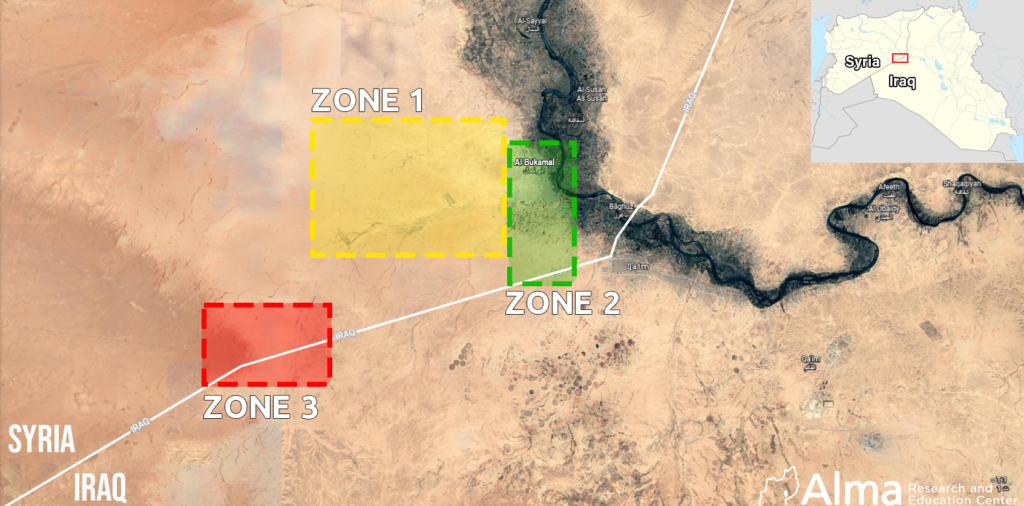In the early morning hours of October 27th, after 14 attacks by Iran-backed militias on US forces in Iraq and Syria between October 17th and October 25th, the United States conducted airstrikes on IRGC munitions storage sites of Iranian-backed proxy militias in Syria. “The strikes took place at roughly 4:30 a.m. on Friday in Syria near Al Bukamal, a Syrian town on the border with Iraq, and were carried out by two F-16 fighter jets using precision munitions,” a US official told Reuters. Defense Secretary Lloyd Austin stated the strikes were in self-defense from the series of attacks on US troops stationed in Iraq and Syria.
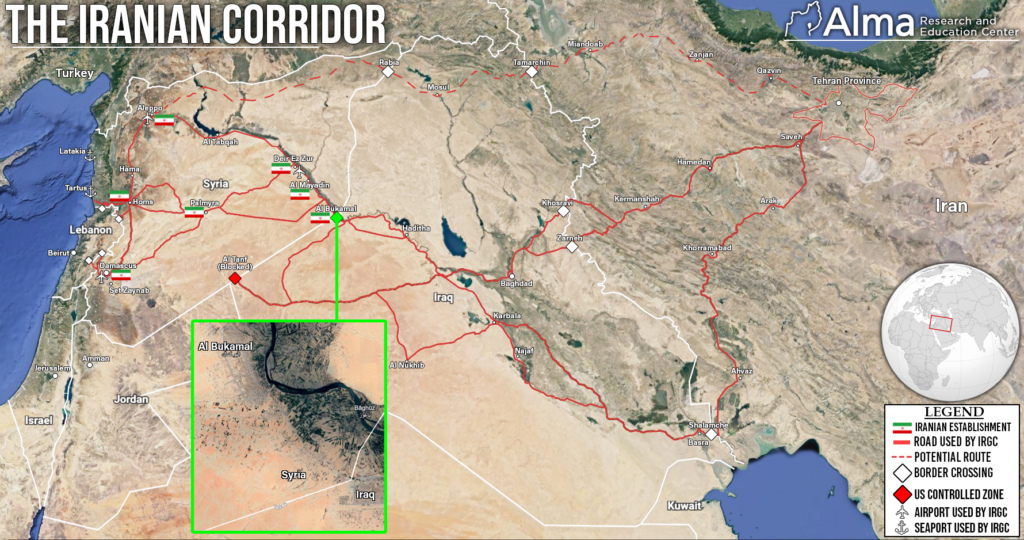
These escalating tensions come after an unprovoked Hamas invasion of Israel on October 7th became the deadliest event in the history of the Jewish people since the Holocaust with 1,400 killed and over 200 hostages taken by Hamas. The United States sent two aircraft carrier strike groups off the coast of Israel to deter further aggression by Iran and its proxy forces. Iranian-backed forces across the Middle East began attacking US bases in Iraq and Syria after Israel exercised self-defense against the surrounding terrorist organizations in Gaza, Lebanon, and the West Bank.
The Iranian Land Corridor: Al-Qaim–Al-Bukamal Border Crossing
The Al-Qaim (Iraqi side)- Al-Bukamal (Syrian side) border crossing was reopened in September 2019 after the area was finally purged of ISIS forces after it was recaptured in November 2017 by elements of the radical Shiite axis led by Iran and the Syrian armed forces. Al-Bukamal is an area known for the smuggling, in both directions (Iraq/Syria), of everything that can be smuggled: food, fuel, drugs, etc.
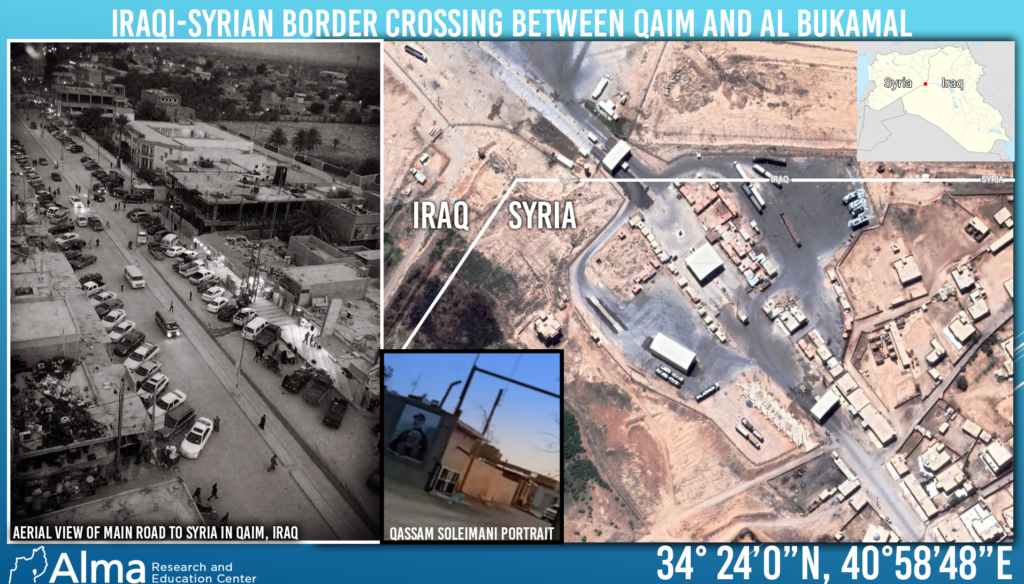
The Al-Bukamal area is a significant source of income for all those involved in smuggling, especially those of the radical Shiite axis. Since its opening, the Al-Bukamal crossing has been controlled and operated almost exclusively by associates of the radical Shiite axis led by Iran. On the Iraqi side of the border, in the Al-Anbar province, those leading the smuggling are the Iraqi Hezbollah militias, liwa’ (brigade) 45 and liwa’ (brigade) 13, led by a man nicknamed Qassem Maslach.

The geographical area of Al-Qaim and Al-Bukamal is characterized by a large presence of military bases operating under Iranian auspices. The main role of the Iranian Shi’ite militias today is to secure the land corridor routes in Iraq and Syria in general and the border crossing area in Al-Qaim and Al-Bukamal in particular. The military bases are used, among other things, to store weapons. Such bases can be found in Um al-Malak, in the area of Al-Ramana (located near the border about 20 km after the town of Al-Baghuz), and in the area of Dughimah between Al-Obeidi and Al-Ramana. The presence of Shiite militias also exists in Akasha, Ras al-Haram, Mashariya, and Makr alDibf. In some of these places, residents of the area have been forced to emigrate in favor of establishing these logistics bases.
In addition to the formal crossing, there are also informal crossings and roads where it is possible to cross the border between Iraq and Syria. Such crossings exist in the area of the villages of AlAbbas and Al-Hari (يرهلا ةيرق), southeast of Al-Bukamal, near the Al-Qaim/AlBukamal formal border crossing (coordinates 34.398175, 40.974831).
In addition, the network of tunnels previously dug by ISIS in the area of the city of Al-Mayadin, north of Al-Bukamal, is sometimes used. One of the axis of these tunnels is the village of AlSheikh Ans, Qal’a al-Rabah, the area of Al-Mazra’a, and from there directly to the city of AL Mayadin in Syria.
Al-Bukamal – a Syrian city under Iranian security control
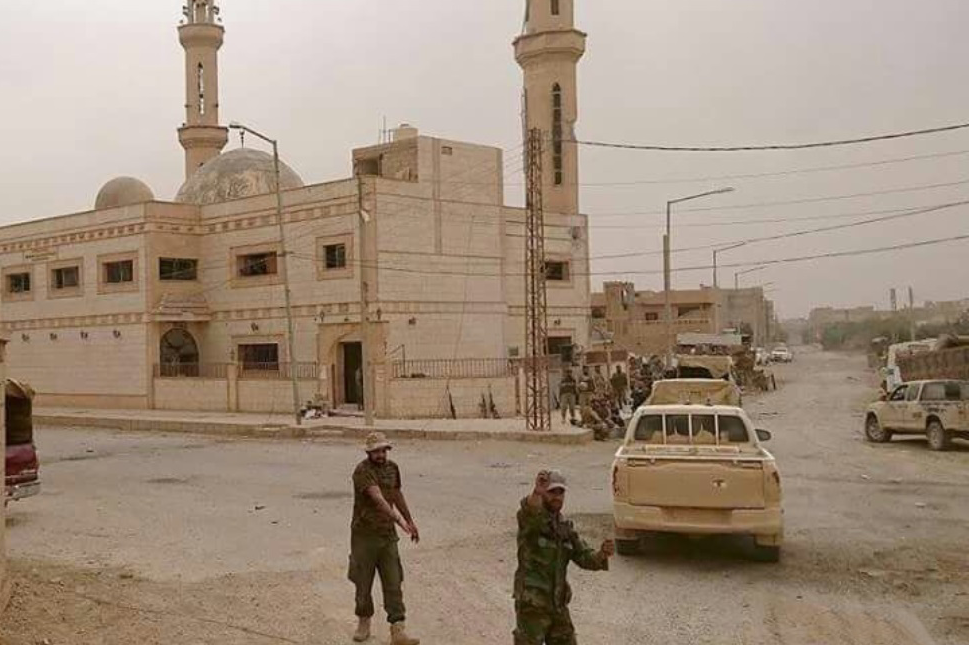
The city’s unique geographical location along the land corridor route between Iran and Lebanon has made it one of the strategic key points in the land corridor of the radical Shiite axis led by Iran. As a result, Iran’s military and civilian hold on the region is absolute. Members of the Shiite militias belonging to the radical Shiite axis control the security in the city of Al-Bukamal. One of the main functions of these militias is to secure the land corridor in the Syrian geographical area. The operational arm in the city of Al-Bukamal is Fog’ 47 (regiment 47). Fog’ 47 belongs to the Shiite militia “Hezbollah Iraq.” The general military commander in the region is Hajj Askar, an Iranian Revolutionary Guards officer who lives in the secure military compound belonging to the Shiite axis in the city of Al-Bukamal called Al-Mari Square.
The Imam Ali military base
The Imam Ali military base was established by the Iranians in 2019. The base is located east of the city of Al-Bukamal, close to the border with Iraq. It is the largest and most central base belonging to the radical Shiite axis led by Iran in the area of the land corridor crossing in AlBukamal. At the Imam Ali base, the weapons from Iran via Iraq are stored and prepared for further transport westward to Lebanon. It appears that Shiite militias train in and near the base. In 2019, in light of several attacks against the base, Iran began digging tunnels suitable for the entry and passage of large transport vehicles such as trucks. These tunnels are apparently used to store heavy weapons. Towards the end of 2019, large-scale construction was carried out, and the base was expanded. Nowadays, the Imam Ali base is built of three main complexes.
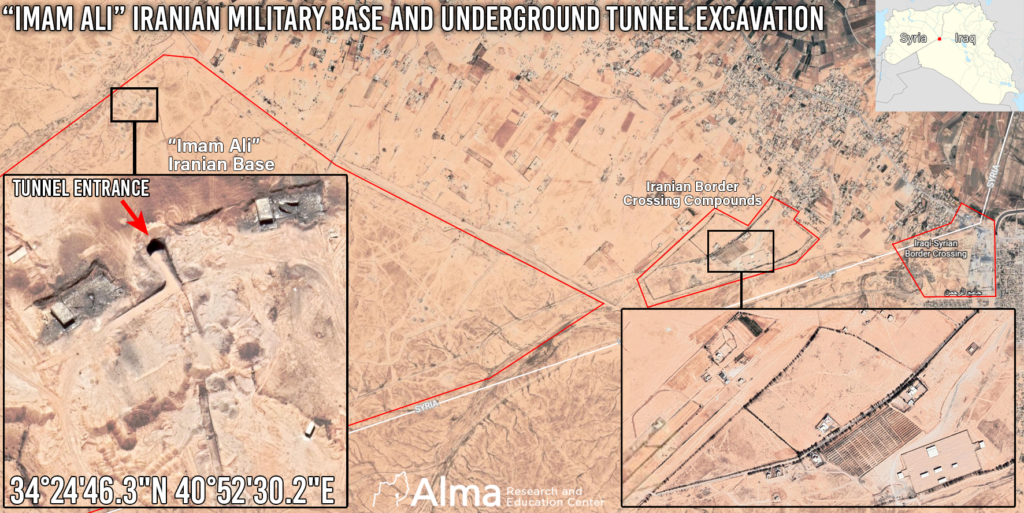
The first base compound is very significant in bringing weapons into Syria. There are at least 60 bunkers and large warehouses in this complex for, among other things, storing ballistic missiles. The second base complex, closest to the border, contains air defense systems and platforms for launching ballistic missiles and rockets of various types. There may be cross-border tunnels into Iraq. The base’s third complex, the western one, also contains air defense systems and many weapons depots. Its main purpose is apparently to protect the other two compounds, and it is located on a mound overlooking the entire area.
